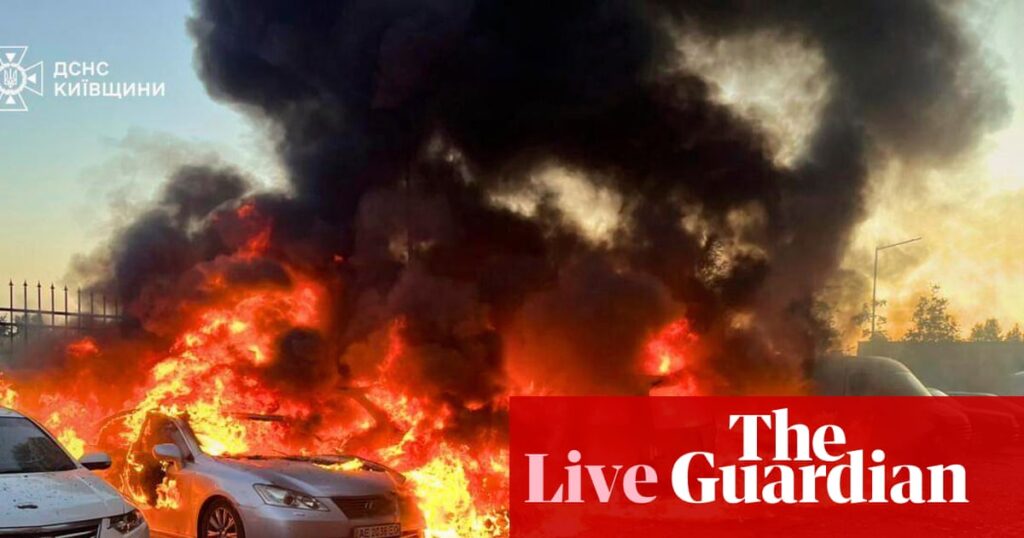
In a dramatic escalation of tensions in Eastern Europe, Poland scrambled its aircraft early Saturday as Russia launched a massive aerial assault on Ukraine. The attack, involving hundreds of drones and missiles, targeted areas near the Polish border, prompting swift defensive measures from the NATO member.
The Polish armed forces confirmed the deployment of both national and allied aircraft to secure its airspace. “Polish and allied aircraft are operating in our airspace, while ground-based air defense and radar reconnaissance systems have been brought to the highest state of readiness,” the operational command stated in a post on social media platform X.
By 03:40 British time, air raid alerts blanketed nearly all of Ukraine, as the Ukrainian air force warned of incoming Russian attacks. The operation concluded shortly after 05:00, with Polish forces announcing that the airstrikes had ceased, describing their actions as “preventative and aimed at securing airspace in areas adjacent to the threatened area.”
Massive Russian Attack on Ukraine
The Russian assault, described by Ukrainian President Volodymyr Zelenskyy as one of the largest in recent weeks, involved 40 missiles and approximately 580 drones. The attack resulted in three deaths and dozens of injuries, according to Ukrainian officials.
“Every such strike is not a military necessity but a deliberate strategy by Russia to terrorize civilians and destroy our infrastructure,” Zelenskyy stated, urging allies to bolster Ukraine’s air defenses and impose further sanctions on Moscow.
In the Kyiv region, local authorities reported strikes in Bucha, Boryspil, and Obukhiv, damaging homes and vehicles. Meanwhile, in the western region of Lviv, two cruise missiles were intercepted, according to province governor Maksym Kozytskyi.
Cyber-Attack Disrupts European Airports
Amid the military developments, a cyber-attack on Collins Aerospace’s systems disrupted operations at major European airports, including London Heathrow, Brussels, and Berlin Brandenburg. The attack rendered automated check-in and boarding systems inoperable, leading to flight delays and cancellations.
Brussels airport reported a “large impact” on flight schedules, while Berlin’s Brandenburg airport warned of longer waiting times. Collins Aerospace, a subsidiary of RTX, acknowledged the issue and stated efforts were underway to restore functionality.
Regional and Global Reactions
The international community is closely monitoring the situation, with NATO allies expressing solidarity with Poland and Ukraine. The incident underscores the ongoing volatility in the region, exacerbated by Russia’s aggressive military maneuvers.
In Estonia, tensions flared as three Russian MiG-31 fighters allegedly violated its airspace, prompting NATO to scramble Italian F-35 fighters in response. Estonia condemned the incursion as a “dangerous provocation,” while Russia denied any wrongdoing, claiming compliance with international airspace regulations.
Historical Context and Future Implications
The developments come amid a protracted conflict in Eastern Ukraine, where Russian forces have been attempting to seize control of the Donetsk and Luhansk regions. The latest escalation follows a series of high-profile meetings between U.S. President Donald Trump and Russian President Vladimir Putin, as well as Ukraine’s Zelenskyy, which have yet to yield a diplomatic breakthrough.
As Ukraine continues its counteroffensive, the conflict shows no signs of abating. Zelenskyy has announced plans to export certain types of weapons to finance domestic military production, signaling a long-term commitment to bolstering Ukraine’s defense capabilities.
Meanwhile, the European Union has proposed accelerating a total ban on Russian natural gas imports, aiming to cut off a significant revenue stream for the Kremlin. The proposal, part of a broader sanctions package, reflects the EU’s determination to pressure Russia economically.
As the situation unfolds, the international community remains on high alert, with the potential for further escalation posing a significant risk to regional stability.





